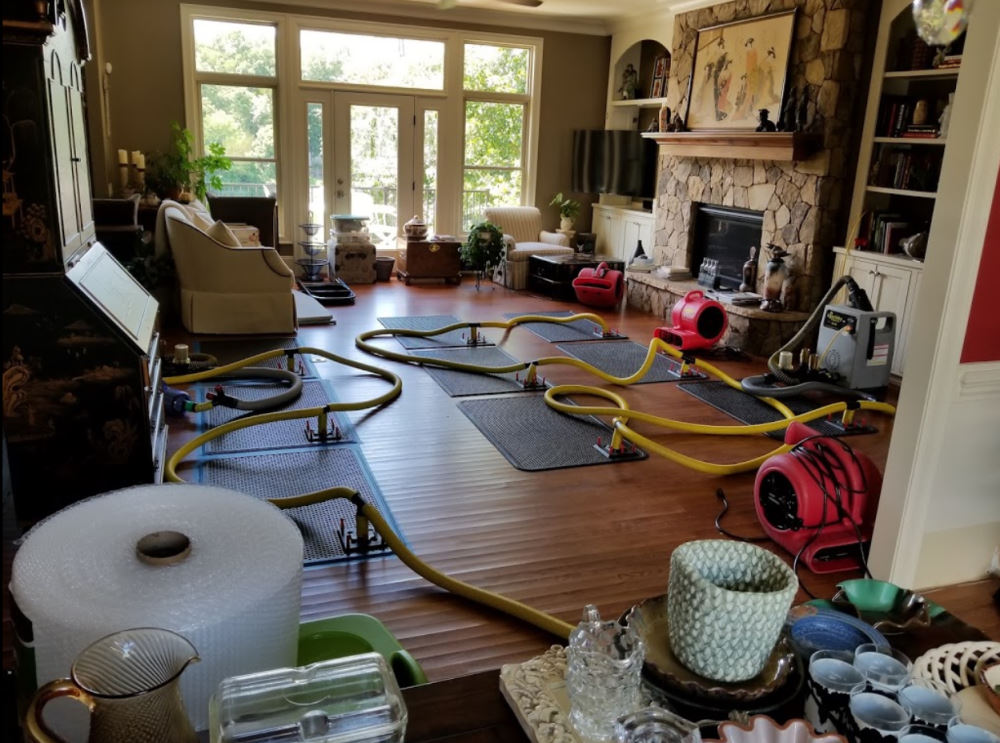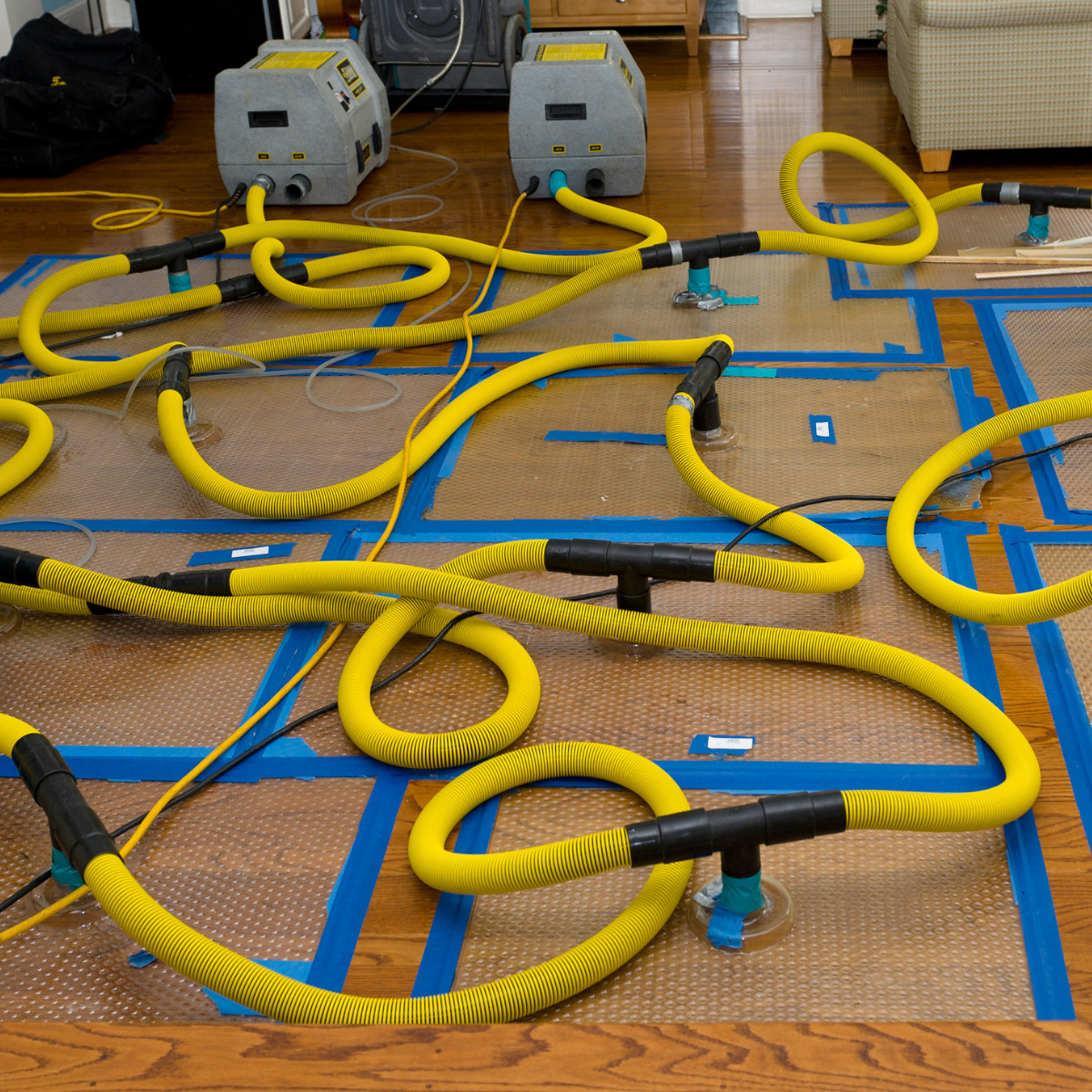Emergency Water Damage Repair Tips for Homeowners
Vital Steps to Follow for Effective Water Damages Repair in Your Home
When confronted with water damages in your house, understanding the vital actions for efficient restoration can make all the distinction. You need to assess the damages and guarantee safety and security prior to tackling the trouble. Quiting the resource of water is essential, yet it's just the start. There's a series of activities you must take to safeguard your residential or commercial property from more issues as soon as you've handled that. Let's discover what you should do next.
Examine the Damages
When you find water damages in your home, the very first step is to evaluate the damages thoroughly. Beginning by determining the resource of the water intrusion. Look for leakages, burst pipelines, or various other issues creating the problem. Next, check out the affected locations for visible signs of damage, including bending, mold, or discoloration growth. Do not fail to remember to search in surprise spots like behind walls or under flooring, as water can seep into these areas unnoticed.Document the damage by taking clear photos and notes. This will assist you when reviewing the scenario with your insurance supplier or reconstruction professionals. Take note of the kind of products influenced, as various products require various restoration approaches. Evaluate the degree of the damage. Is it extensive or small? Recognizing the range will guide you in deciding whether to manage it yourself or hire the experts for a more comprehensive remediation process.

Ensure Security
Prior to you begin any repair job, assuring your security is essential. Examine the problem of your home. If the water's deep or if you notice electrical hazards, don't enter the area. Shut off the electrical energy and gas supply to stop crashes. Put on safety equipment like boots, masks, and gloves to protect on your own from impurities or mold.It's essential to remain mindful of your environments; expect sharp objects and unsafe surfaces. Treat it as dangerous waste if the water is from a sewage back-up. Keep children and pet dogs far from impacted areas to avoid exposure.Once you have actually taken these preventative measures, you can wage the remediation process. Remember, your security precedes, and if you're ever before not sure, it's finest to seek advice from a professional. Taking these actions will certainly help guarantee you're all set to tackle the remediation safely and effectively.
Stop the Source of Water
After guaranteeing your safety, the following action is to quit the source of water. Determine where the leak is coming from. Maybe a ruptured pipe, a defective home appliance, and even heavy rain going into via a damaged roof. Transform off the main water supply to your home to stop further flooding if it's a plumbing issue. For devices, unplug them and turn off their supply of water valves.If the source is outdoors, like rainwater, try to divert it far from your home using sandbags or various other obstacles. For small leaks, you may be able to use tape or a sealer temporarily until a specialist can fix it. Keep in mind, resolving the source swiftly is important to minimizing damage and stopping mold and mildew growth. When you have actually quit the water, you'll remain in a better setting to carry on to the following action in the restoration procedure.

Get Rid Of Excess Water
Act swiftly to remove excess water, as standing water can bring about a lot more comprehensive damage and mold development. Collect your tools: a wet/dry vacuum cleaner, buckets, and towels. You can use towels to saturate up the moisture if the water is superficial. For deeper water, a wet/dry vacuum is your best wager. Make sure to empty the vacuum cleaner often to stay clear of overflow.If the water is polluted, like from a sewer backup, put on protective gear, consisting of gloves and masks, to keep on your own secure. Once you've gotten rid of as much water as feasible, look for concealed pockets of moisture in edges and under furniture, as these can harbor mold.Don' t fail to remember to switch off electrical home appliances and power electrical outlets in damp areas to protect against threats. This first step is crucial in lessening damages and establishing the stage for an effective reconstruction procedure.
Dry and Dehumidify the Area
It's vital to dry and dehumidify the area completely when you have actually gotten rid of the excess water. Begin by utilizing dehumidifiers efficiently to draw moisture out of the air and avoid mold and mildew development. Keep an eye on humidity levels to guarantee the area dries totally.
Eliminate Standing Water
To properly take on water damages, you require to focus on eliminating standing water as promptly as possible. Start by collecting essential devices, like a wet/dry vacuum cleaner or a pump, depending upon the quantity of water. If the water is superficial, a vacuum cleaner must work. For bigger quantities, a pump is more efficient. While working, make certain to put on protective gear to keep on your own risk-free from impurities. As you eliminate the water, take note of hidden locations like under furniture or in corners where water could gather. When you have actually eliminated the bulk, your room will start to dry. This action is essential, as sticking around water can cause mold development and much more comprehensive damages.
Usage Dehumidifiers Effectively
Exactly how can you efficiently make use of dehumidifiers to completely dry and evaporate your area? Start by positioning your dehumidifier in one of the most affected location, ideally where water damage is most extreme. Make sure to shut all windows and doors to produce a sealed setting. Transform on the dehumidifier and set it to the ideal humidity level, normally around 30-50%. Vacant the water collection storage tank regularly, or think about making use of a design with a continual drainage alternative for convenience. When possible, make use of fans to enhance air movement, aiding the dehumidifier work much more efficiently. Keep the dehumidifier running until you're certain that the area is extensively dried out, stopping mold and mildew growth and extra damage (Water Damage Cleanup). This step is necessary for effective water damage reconstruction
Screen Humidity Degrees
Monitoring humidity levels is necessary throughout the drying out procedure, as it aids guarantee your area continues to be devoid of excess moisture. Purchase a reliable hygrometer to track humidity precisely. Preferably, you desire to maintain degrees between 30% and 50%. You may need to change your dehumidifiers or followers to improve air flow if humidity readings rise over this variety. Check the readings regularly, specifically in locations prone to moisture, like basements or washrooms. Consider increasing air flow or using added dehumidifiers if you discover persistent high moisture. Staying on top of these levels not only speeds up the drying out process but also stops mold development, ensuring your home stays secure and comfy.
Tidy and Disinfect Affected Surfaces

Bring back and Repair Your Home
After cleaning and sanitizing the influenced locations, it's time to bring back and repair your home. Begin by evaluating the damages. Inspect for structural concerns, like deteriorated floorings or walls, and attend to any necessary repairs. Changing damaged drywall or flooring is crucial for both visual appeals and safety.If your furnishings or items were impacted, consider whether they can be restored or require replacement. Clean or properly restore products where possible.Next, touch and paint walls up any type of locations that need focus. This not just enhances look but additionally shields surface areas from future water damage.Don' t neglect to inspect your pipes and appliances for leakages, making sure everything's working properly. Consider setting up a dehumidifier to prevent future dampness issues. By taking these actions, you'll recover your home to its former magnificence and produce a more secure living atmosphere.
Regularly Asked Inquiries
For How Long Does Water Damages Restoration Usually Take?
Water damages repair commonly takes anywhere from a couple of days to numerous weeks, relying on the level of the damages (Water Damage Cleanup). You'll intend to evaluate the circumstance rapidly to reduce more complications and guarantee appropriate repair
Will My Insurance Policy Cover Water Damage Reconstruction Expenses?
Your insurance might cover water damage restoration costs, however it depends upon your policy. Check your coverage information and call your insurance policy representative to clarify what's consisted of and what you require to sue.
Can I Take Care Of Water Damages Reconstruction Myself?
You can manage water damage reconstruction on your own, however it's vital to examine the circumstance. If it's extensive, you may wish to call experts. Constantly focus on safety and guarantee you have actually obtained the right tools.
What Are the Indications of Hidden Water Damages?
You might see indications of covert water damages like deformed walls, moldy odors, or staining. If your floorings really feel spongy or you spot mold, it's time to examine better prior to the situation worsens.
Just How Can I Stop Future Water Damages in My Home?
To prevent future water damage in your home, you ought to on a regular basis read more check pipes, seal splits, keep gutters, and assurance correct drainage. Setting up a sump pump and dampness barriers can likewise assist maintain your space dry. When you discover water damages in your home, the first step is to examine the damages completely. Act quickly to get rid of excess water, as standing water can lead to much more considerable damage and mold development. To effectively deal with water damages, you require to concentrate on eliminating standing water as swiftly as possible. As you eliminate the water, pay attention to hidden locations like under furniture or in corners where water might collect. Water damages reconstruction typically takes anywhere from a couple of days to numerous weeks, depending on the degree of the damage.